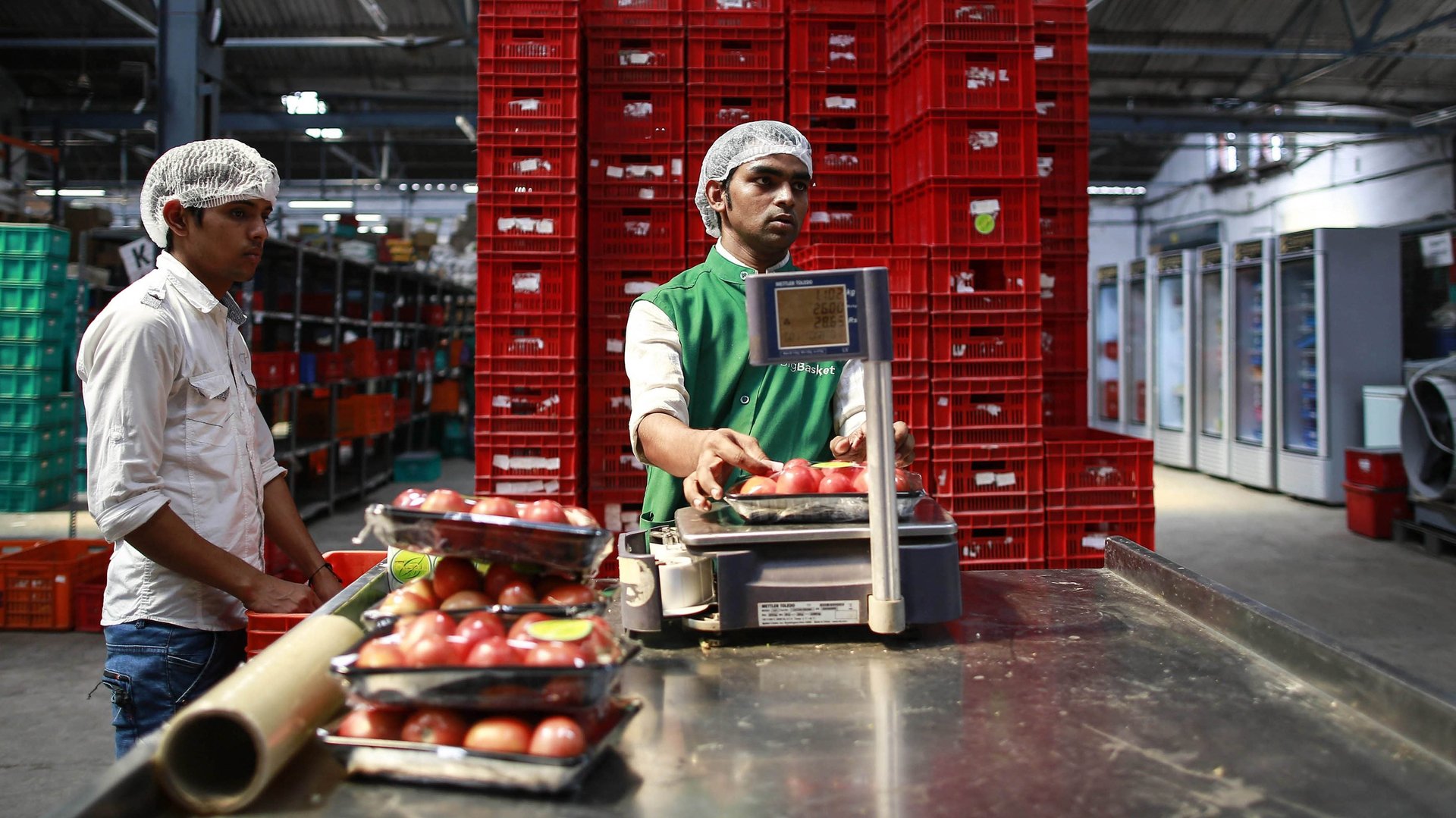As India’s e-commerce sector reels, grocery is feeding another frenzy
Despite the many casualties and huge losses, the Indian e-commerce sector is poised for expansion.


Despite the many casualties and huge losses, the Indian e-commerce sector is poised for expansion.
The Indian online retail market size could grow 2.5 times in the next three years to Rs1.8 lakh crore ($27.9 million), ratings agency Crisil said in a report this week. The growth will largely be spearheaded by the online grocery retail segment.
As per Crisil’s estimates, the e-commerce market size tripled to Rs70,000 crore over the last three financial years. The sector has grown mostly as more and more Indians have access to the internet on the back of falling data rates. “Increasing awareness of online shopping and lucrative deals and discounts” have added to the boom, Crisil said.
However, online retail still has massive headroom, as it accounted for a mere 1.5% of the overall Rs49 lakh crore retail market in India last fiscal.
The lows
One of the biggest challenges for e-commerce firms is to make money.
An analysis of 11 such companies—marketplaces, grocery retailers, furniture sellers, and jewellery brands—revealed that “almost 45% of the over Rs40,000 crore ($6.2 billion) invested between fiscals 2014 and 2016 was wiped off due to losses at e-retailers.”
Twenty-six prominent startups shut shop in the last two years, the report said. “Chastened investors are now putting money in just a handful of players that are showing sustainability and enjoy a major market share,” it added.
Grocery game
The online grocery business is set to be the fastest-growing e-tail segment, expanding at a compound annual growth rate (CAGR) of over 65% between fiscal 2017 and 2020, Crisil estimates. Overall, grocery-related ventures’ revenue is expected to almost quadruple to Rs10,000 crore over the next three years.
“Investments in technology, new strategies adopted by players such as introducing private labels, same-day and next-day delivery, and B2B food services would all aid growth,” the report said.
The Indian online grocery retail market grew seven-fold to Rs20,000 crore in first nine months of fiscal 2018 “with major players such as Big Basket and Grofers, as well as new entrants such as Amazon, Flipkart, D-Mart, and Reliance, sharpening focus,” Crisil said.
Until last year, online grocery retailers comprised just between 2% and 4% of all overall online retail. By 2019, this will climb up to 7%.
Even as several early entrants into India’s online grocery retail space have either failed or struggled to grow, e-commerce giants Flipkart and Amazon have entered the space given its huge potential.
“While categories like fashion and electronics serve a different need, we know that people buy a mobile phone once or twice a year, and a refrigerator once in two years. So you cannot make Amazon a habit if you focus on just these,” Saurabh Srivastava, director, category management, fast-moving consumer goods (FMCG) at Amazon India, told Quartz in January. “If you look at the spending habits of Indian customers, 60-70% of their wallet goes toward consumable products.”